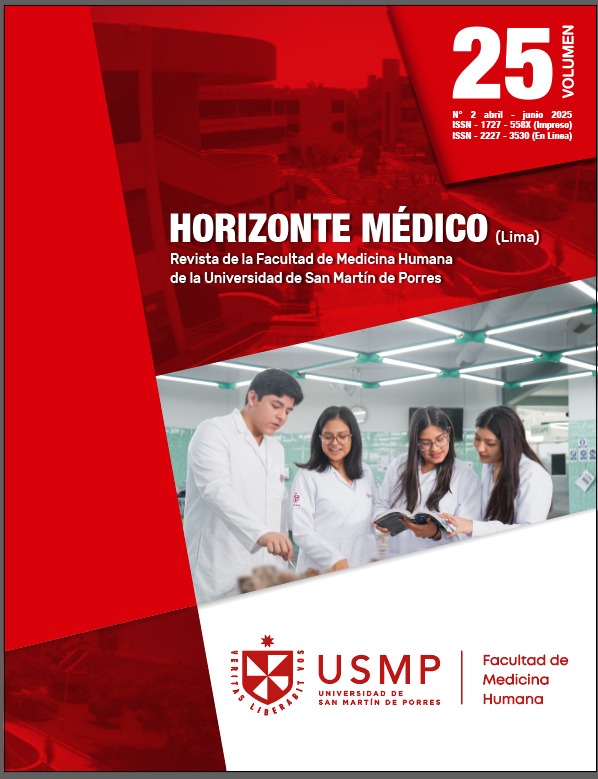Pseudoepitheliomatous hyperplasia due to botulinum toxin treatment for anal fissure: a case report
DOI:
https://doi.org/10.24265/horizmed.2025.v25n2.13Keywords:
Fissure in Ano , Fibrosis , Hyperplasia , Botulinum ToxinAbstract
Pseudoepitheliomatous hyperplasia is a rare benign condition characterized by pronounced epidermal hyperplasia that mimics carcinoma secondary to inflicted damage. Few cases have been described, all associated with tattooing. The most commonly used treatments consist of the application of topical corticosteroids, surgical excision, CO2 laser curettage and topical 5-fluorouracil, the choice of which will depend on the extent of the affected area and the patient’s tolerance to treatment. We present the case of a 66-year-old female patient with a proctologic history (untreated chronic constipation) and an obstetric history (episiotomy), who sought medical attention for severe proctalgia related to a chronic anal fissure without an associated secondary cause and without improvement following topical medical treatment with calcium channel blockers and fiber. Considering the obstetric history, the initial treatment chosen was infiltration with botulinum toxin on both edges of the anal fissure, after which the condition worsened. Taking this into account, along with the physical examination of the anal fissure—with deeper ulceration and markedly fibrotic edges—a biopsy was performed, revealing pseudoepitheliomatous hyperplasia without atypia or carcinoma. The algorithm used to assess causality was that of the Spanish Pharmacovigilance System. The use of botulinum toxin for the treatment of anal fissure is increasingly widespread; however, there is no available literature on its long-term side effects. Therefore, patients should be followed up to identify unwanted side effects.
Downloads
Downloads
Published
How to Cite
Issue
Section
License
Copyright (c) 1970 Horizonte Médico (Lima)

This work is licensed under a Creative Commons Attribution 4.0 International License.
Horizonte Médico (Lima) (Horiz. Med.) journal’s research outputs are published free of charge and are freely available to download under the open access model, aimed at disseminating works and experiences developed in biomedical and public health areas, both nationally and internationally, and promoting research in the different fields of human medicine. All manuscripts accepted and published in the journal are distributed free of charge under the terms of a Creative Commons license – Attribution 4.0 International (CC BY 4.0).


















